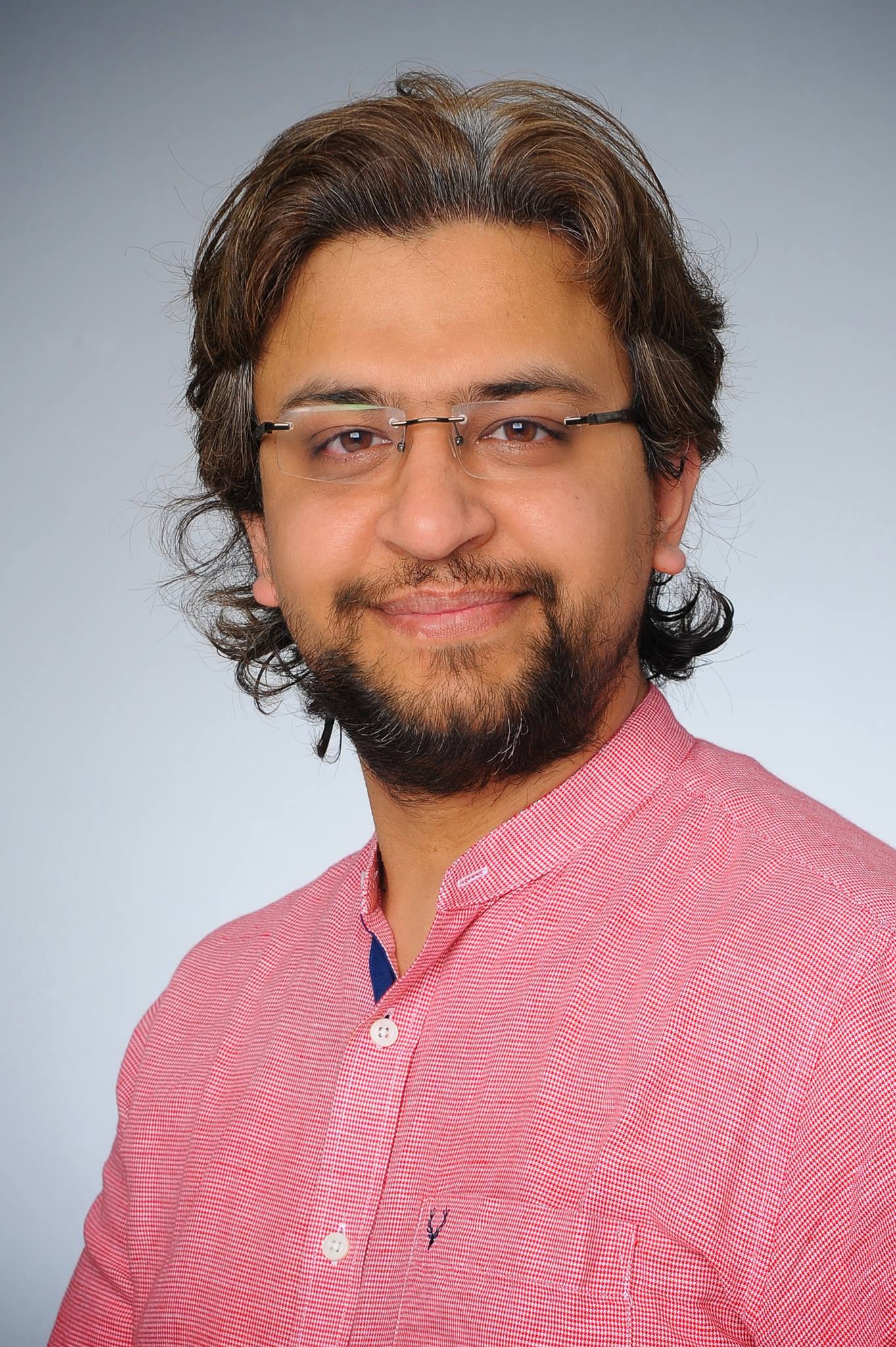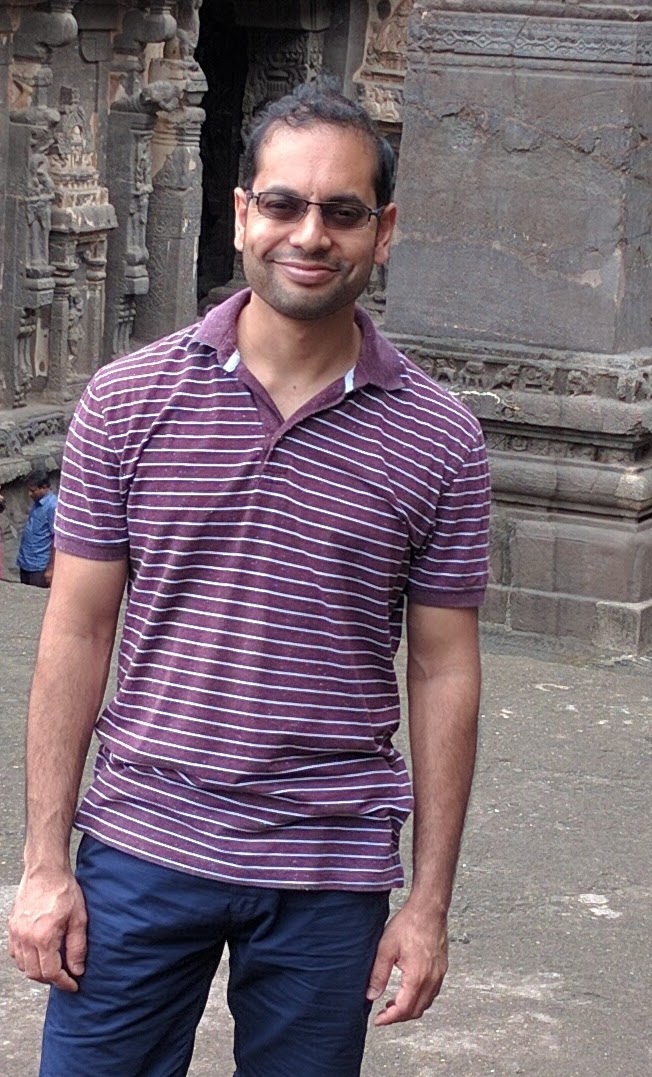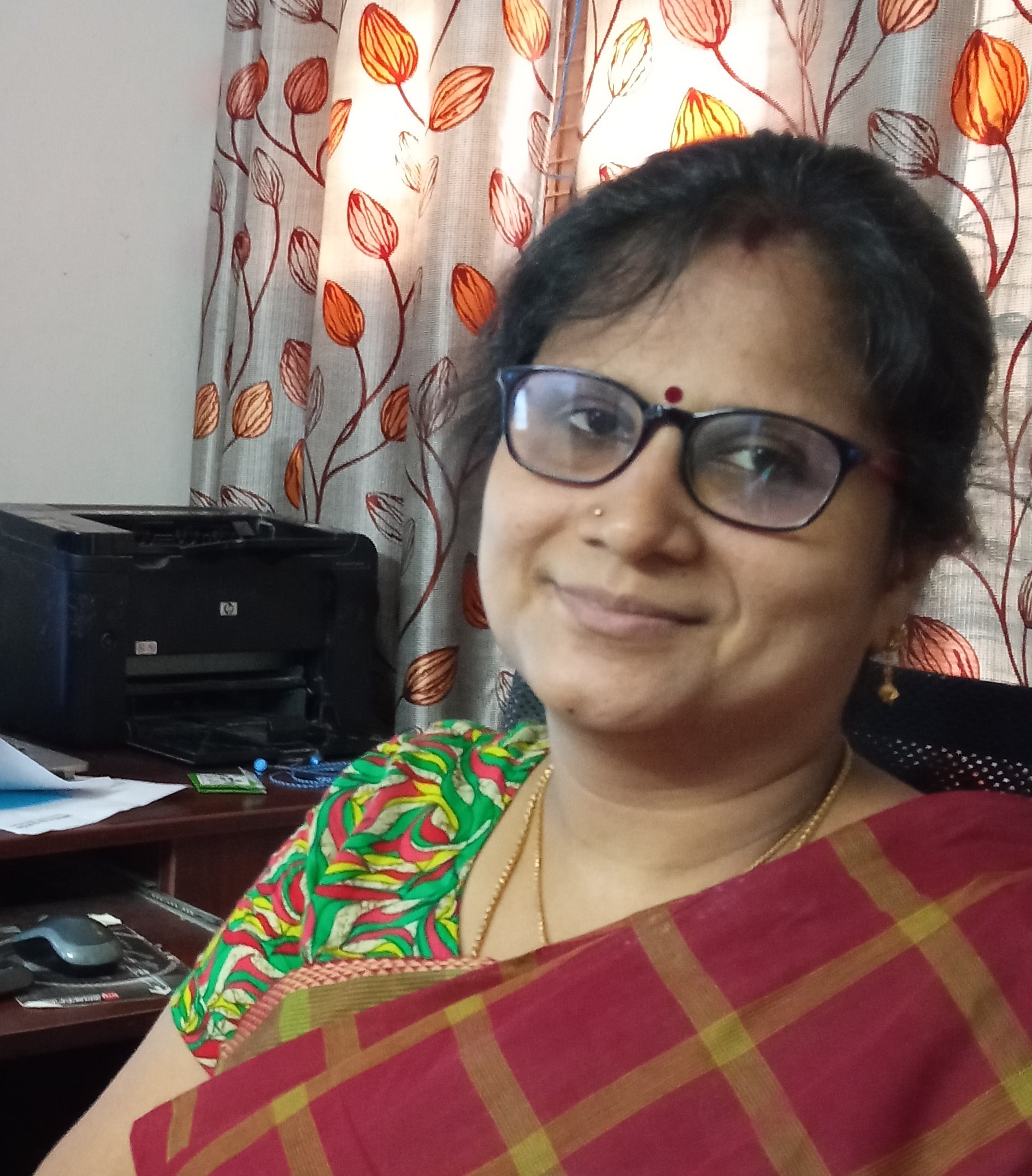
| Home | Aerospace | Biology | Chemical | Computers | Mathematical | Mechanics |
Schedule Summary
November 21
Clicking on a link in this table would take you directly to the meeting.
| 09:30 | Pralay Mitra | High Performance Programming in Drug Discovery |
| 10:00 | Gaurav Ahuja | Illuminating Dark Metabolome Using Artificial Intelligence |
| 10:30 | Malay Bhattacharya | HPC in Metagenomics |
| 11:00 | Sriparna Saha | Multimodal Information Processing in Healthcare System |
| 11:30 | Riddhiman Dhar | Inferring cell phenotype from integrated modeling of gene regulation and metabolism |
| 12:00 | Sanchit Misra | OpenOmics: A framework for accelerating digital biology research |
| 13:00 | Lunch Break | |
| 15:00 | Mohit Jolly | Low dimensionality of phenotypic space as an emergent property of coordinated teams in biological regulatory networks |
| 15:30 | Hamsa Priya M | Understanding the Process of Peptide Self-assembly through Molecular Simulations |
| 16:00 | Sanjay Saxena | Role of High-Performance Computing in Medical Image Analysis to Analyse Human Cancer |
| 16:30 | Anupam Nath Jha | Nanoparticle protein interactions using Computational Microscope |
Our Esteemed Speakers
| November 21 at 09:30 | |
 Pralay Mitra IIT Kharagpur | High Performance Programming in Drug Discovery As long as there is a human, so long there will be disease and hence the requirement for new drugs. The current, drug (novel) discovery process takes about 12 years, spends billions of dollars, and finally may not pass the clinical stages. Efforts have started to improve the success rate and, at the same time to reduce the time and cost requirement by utilizing modern computer architectures and supercomputer systems. This advancement facilitates application of high performance programming for several Bioinformatics problems like protein docking to determine the protein complex structure more efficiently. For example, shared memory programming (openMP) takes a few hours, while GPU-based implementation take a few minutes compared to about a day of computation when implemented as a sequential program. As a result high-throughput screening of potential drug candidates from millions of possible drug molecules can be in a few days. Author Bio: Dr. Pralay Mitra is an Associate Professor of Computer Science and Engineering at the Indian Institute of Technology Kharagpur, India. He did his Ph.D. at the Indian Institute of Science, Bangalore, India, and was a postdoctoral researcher at the University of Michigan, Ann Arbor, USA. Dr. Mitra’s broad research interest is Computational Biology and Bioinformatics. Since 2005, he has been working on developing algorithms for protein-protein docking, protein engineering, and drug discovery. He supervised five Ph.D. students and several M.Tech. and B.Tech. Project students. As part of his work, Dr. Mitra has published more than 30 international peer-reviewed journal papers. One of his recent works includes drug-disease association prediction, lncRNA-disease association prediction, and protein-nucleic acid complex structure modeling. In collaboration with one of the cancer biology groups, Dr. Mitra is developing novel biomarkers and drug molecules for cancer. |
| November 21 at 10:00 | |
 Gaurav Ahuja IIIT Delhi | Illuminating Dark Metabolome Using Artificial Intelligence The Dark Metabolome represents a multitude of uncharacterized metabolites within biological systems and presents a vast untapped resource holding significant potential for understanding health, disease, and drug discovery. Our laboratory at IIIT-Delhi fully exploits the power of Artificial Intelligence algorithms, high-throughput biochemical assays, omics techniques, and genetic screenings to decipher novel/alternative biological functions of cellular metabolites. This talk will focus on some of the successful cases in which state-of-the-art Artificial Intelligence algorithms, coupled with high- throughput assays, assisted in illuminating the Dark Metabolome and unveiled their novel functions as endogenous carcinogenic threats, intracellular direct modulators of GPCR activity, and in anti-aging response. Author Bio: Gaurav is an Associate Professor at the Department of Computational Biology at IIIT-Delhi. He graduated summa cum laude from the University of Cologne, Germany, with a Ph.D. in Natural Sciences. He is a Chemical Biologist with vast experience in Cheminformatics and High-throughput screening assays. Gaurav carried out his Post Doctoral work at several renowned institutes, including the Center for Molecular Medicine Cologne, the Max Planck Institute for Ageing, and the Lee Kong Chian School of Medicine, Singapore. His lab at IIIT-Delhi utilizes a hybrid and interdisciplinary approach combining Artificial Intelligence (AI), Chemistry, and Biology. Further, his laboratory also develops high-throughput in vivo assays for the functional validation of the AI-predictions. The ultimate goal of his laboratory is to uncover the functional importance of endogenous metabolites, in development, health, and diseases. Within few years of its inception, his laboratory contributed to establishing the functional link between the chemical and biological world of the cell. Gaurav is a recipient of the prestigious Ramalingaswami Re-entry Fellowship from DBT, Indian National Science Academy (INSA) Young scientist Award, and Discovery Track Investigator (IIITD). He is also a member of the International Chemical Biology Society. |
| November 21 at 10:30 | |
 Malay Bhattacharya ISI Kolkata | HPC in Metagenomics This talk will highlight how High Performance Computing may assist in metagenomic analyses. Author Bio: Malay Bhattacharyya is currently an Associate Professor of Machine Intelligence Unit, an Associate Member of Centre for Artificial Intelligence and Machine Learning, and an Associate Member of Technology Innovation Hub on Data Science, Big Data Analytics, and Data Curation at Indian Statistical Institute, Kolkata. He is a certified Design Thinker from MIT Sloan School of Management and holds a doctorate in Computer Science from Indian Statistical Institute. He has about 9 years of teaching and 16 years of research experience including short academic visits at Stanford University, University of Ljubljana, and Indian Institute of Science, Bangalore. He is currently serving as a member of the Assessment & Search Committee, ACM Publications Board. He served in The Lancet COVID-19 Commission: India Task Force during 2021-22. His current research interests encompass Computation for Social Good and Computational Healthcare. He has published research studies in high-impact journals like Cell, Nature Medicine, and The Lancet Microbe. His research has received generous funding from DRDO, Google, DST and MeitY, Government of India, totaling about INR 4 Crores (~ USD 0.5 Million). He is a recipient of the Impact Scholars Award from Google (2021), Young Engineer Award from INAE (2018), Young Engineers Award from IEI (2016-17), BIRD Award from Bioclues Organization (2015), Young Scientist Award from ISCA (2013-14), and won several best paper and best reviewer awards. He became an INAE Young Associate in 2018 and a Sir Visvesvaraya Young Faculty Research Fellow in 2015-16. He reinforces Talent Development to companies like Tata Steel. |
| November 21 at 11:00 | |
 Sriparna Saha IIT Patna | Multimodal Information Processing in Healthcare System In this talk I will describe how multimodal information collected from different sources can help improve breast cancer prognosis prediction. Author Bio: Dr. Sriparna Saha is currently serving as an Associate Professor in the Department of Computer Science and Engineering, Indian Institute of Technology Patna, India. She has authored or co-authored more than 400 papers. Her current research interests include machine learning, deep learning, natural language processing, multiobjective optimization and biomedical information extraction. Her h-index is 38 and the total citation count of her papers is 7917 (according to Google scholar). She is also a senior member of IEEE, fellow of IETE. She is the recipient of Lt Rashi Roy Memorial Gold Medal from the Indian Statistical Institute for outstanding performance in MTech (computer science), Google India Women in Engineering Award, 2008, NASI YOUNG SCIENTIST PLATINUM JUBILEE AWARD 2016, BIRD Award 2016, IEI Young Engineers' Award 2016, SERB WOMEN IN EXCELLENCE AWARD 2018, SERB Early Career Research Award 2018, Humboldt Research Fellowship, Indo-U.S. Fellowship for Women in STEMM (WISTEMM) Women Overseas Fellowship program 2018 and CNRS fellowship. She has visited University of Heidelberg, Germany, University of Trento, Italy, University of Caen, France, University of Mainz, Germany, University of Kyoto, Japan and University of California San Diego as a visiting scientist. Her research publications have been published in reputed forums like IEEE/ACM Transactions, ACL, NAACL, COLING, SIGIR, ECIR, ICPR, ECAI and many more. She won the best paper awards in CLINICAL-NLP workshop of COLING 2016, IEEE-INDICON 2015, International Conference on Advances in Computing, Communications and Informatics (ICACCI 2012). She is currently also serving as the Associate Editor of IEEE/ACM Transactions on Computational Biology and Bioinformatics, IEEE Transactions on Computational Social Systems, ACM Transactions on Asian and Low-Resource Language Information Processing (TALLIP), Expert Systems with Applications, PLOS ONE, Machine Learning with Applications. She is in the editorial board of IEEE Internet Computing (This is one of the top magazines in the area of Internet technologies (IC's 2019 impact factor is 4.231 - 2-year Impact Factor = 5.277 - H-index = 103);), Engineering Applications of Artificial Intelligence, Elsevier journal (impact factor: 6.2, h5-index: 65). Her name is included in the list of top 2% of scientists of their main subfield discipline (Artificial Intelligence and Image Processing), across those that have published at least five papers (a survey conducted by Stanford University). Her name is included in the list of eight leading women scientists in the area of AI in India published by INDIAai which is the National AI Portal of India - a central hub for everything AI in India and beyond, a joint initiative of MeitY, NeGD and NASSCOM, the website aims to be the trusted content powerhouse in the backdrop of India's journey to global prominence in Artificial Intelligence. |
| November 21 at 11:30 | |
 Riddhiman Dhar IIT Kharagpur | Inferring cell phenotype from integrated modeling of gene regulation and metabolism The information encoded in the genome and the surrounding environment determines the phenotype of a cell. Genome information is converted into a complex gene regulatory program that remodels gene expression in response to cellular and environmental signals. This process determines expression levels of all cellular proteins – both structural and metabolic. The metabolic state of a cell along with the expression of structural proteins specify cellular function and phenotype. Can we predict phenotype of a cell from its genome sequence or its gene expression profile? For doing so, each of the steps in the conversion of genomic information to metabolic state would have to be modeled. There are several challenges in this. First and foremost, we have very little understanding of how to predict regulatory network from genome information. However, recent studies have enabled construction of regulatory networks from single-cell gene expression profile. The second challenge is to predict transitions in gene expression profile in response to perturbations. The third challenge is to connect gene expression profiles to metabolic state. Although some methods have been developed in this regard, these methods work at the level of cell populations. Thus, the final challenge is to implement this prediction at the level of individual cells. Our work is focused on addressing two of these challenges. We are integrating gene regulatory network topology with the activity of the transcription factors in the network. This will enable us to predict transitions in expression profiles in response to signals and perturbations. In addition, we are combining single-cell gene expression profiles with genome-scale metabolic models to predict metabolic state of individual cells. These models together will facilitate a better understanding of how genomic information gives rise to phenotypes. Author Bio: Riddhiman Dhar is a faculty member at the Biotechnology department of IIT Kharagpur. His research interests are Drug resistance evolution, Genotype-phenotype mapping, Phenotypic heterogeneity, and Artificial Intelligence |
| November 21 at 12:00 | |
 Sanchit Misra Intel Labs | OpenOmics: A framework for accelerating digital biology research We are in the epoch of Digital Biology. Datasets & compute requirements for Digital Biology are poised to dwarf everything else on the planet making them a leading indicator for data-centric workloads. Digital Biology is fueled by the convergence of three revolutions 1) Measurement of biological systems at high resolution resulting in massive multi-modal, multi-scale, unstructured, distributed data, 2) Novel data science (AI and data management) techniques on this data, and 3) Wide-spread cloud use enabling massive compute and public data repositories, large collaborative projects and consortia. It will require computing and data management at unprecedented scale and speed. However, performance alone would not suffice if it significantly compromised the productivity of biologists and data scientists who are at the forefront of this transformation. This talk will detail early results of some of our research and learnings preparing for this emerging era of computing, and our efforts to build Open Omics acceleration framework: a one-click, containerized, customizable, open-sourced framework for accelerating digital biology research. Author Bio: Dr. Sanchit Misra is a senior research scientist and lead the efforts in computational biology/HPC research at Intel Labs. Before joining Intel Labs, he earned his PhD in high performance computational biology from Northwestern University. Dr. Misra has ~15 years of experience in Genomics and machine learning and scaling applications on large clusters/supercomputers, extracting every iota of performance from the hardware and driving hardware improvements. Over the years, he has led Intel’s collaborations on various computational biology projects with domain experts (WGS with Broad institute, Harvard Medical school, Wellcome Sanger institute; transcriptomics with BGI), AI experts (combining HPC and AI for medical research with MILA; Graph Neural Networks with Stanford; applying learned indexes to genomics with MIT), HPC experts (Georgia Tech, Purdue University, Virginia Tech, IIT Bombay and Indian Institute of Science) and architecture experts (University of Michigan). |
| Lunch Break on November 21 at 13:00 | |
| November 21 at 15:00 | |
 Mohit Jolly IISc Bangalore | Low dimensionality of phenotypic space as an emergent property of coordinated teams in biological regulatory networks Biological networks driving cell-fate decisions involve complex interactions, but they often give rise to only a few phenotypes, thus exhibiting low-dimensional dynamics. The network design principles that govern such cell-fate canalization remain unclear. Here, we investigate networks across diverse biological contexts– Epithelial-Mesenchymal Transition, Small Cell Lung Cancer, and Gonadal cell-fate determination – to reveal that the presence of two mutually antagonistic, well-coordinated teams of nodes leads to low-dimensional phenotypic space such that the first principal component (PC1) axis can capture most of the variance. Further analysis of artificial team-based networks and random counterparts of biological networks reveals that the principal component decomposition is determined by the team strength within these networks, demonstrating how the underlying network structure governs PC1 variance. The presence of low dimensionality in corresponding transcriptomic data confirms the applicability of our observations. We propose that team-based topology in biological networks are critical for generating a cell-fate canalization landscape. Author Bio: I am an Assistant Professor at the Centre for BioSystems Science and Engineering (BSSE) at IISc Bangalore. I completed my Bachelor’s and Master’s from IIT Kanpur, and my Ph.D. in Bioengineering at Rice University, where I investigated the presence of hybrid epithelial/mesenchymal phenotypes in cancer metastasis. Then, I was a Gulf Coast Consortia Postdoctoral Fellow jointly at Rice University and UT MD Anderson Cancer Center with Prof. Herbert Levine and Prof. Samir Hanash, developing data-based and spatially extended computational models for tumor microenvironment, before moving to BSSE. |
| November 21 at 15:30 | |
 Hamsa Priya M IIT Madras | Understanding the Process of Peptide Self-assembly through Molecular Simulations Author Bio: Hamsa Priya pursued BTech in Chemical Engineering in Dr. B V Raju Institute of Technology affiliated to JNTU Hyderabad where she was awarded the University Gold Medal. She was AIR 3 in GATE and completed ME at IISc, where she was awarded the Prof. Kuloor Memorial Award for her academic excellence. She completed PhD from Ohio State University. Her doctoral study was in the interface of Biology and Chemical Engineering, wherein she carried out the molecular modeling of interactions in protein solutions that drive pretein crystallization. After a short industrial postdoc in Dow Chemicals, Pune, she joined the Department of Biotechnology at IIT Madras. Her research pertains to understanding the process of self-assembly and aggregation by elucidating the underlying biomolecular interactions, to understand disease pathogenesis, design ordered nanostructures for drug delivery, and enhance therapeutic stability |
| November 21 at 16:00 | |
 Sanjay Saxena IIIT Bhubaneswar | Role of High-Performance Computing in Medical Image Analysis to Analyse Human Cancer Medical image analysis is the process of extracting meaningful insights from medical images. It includes visualization and exploration of 2D medical images and 3D volumes, segmentation, registration, classification, and 3D reconstruction. Recently, Artificial Intelligence(AI) and its components such as Machine and Deep Learning (ML/DL) have played a key role in the Medical Image Analysis process. Medical Image Analysis's role in analysing human cancers of various anatomical regions such as brain, lung, liver, skin etc. has grown stronger in the last decade and it has been an active field of research focusing on various clinical applications such as patient survival estimation, genotype prediction, appropriate region of interest(ROI) extraction, tumor’s progression analysis etc. However, it is challenging to handle large oncological imaging data sets due to the advancement of technology and its upgradation. High-performance computing provides an efficient environment to execute intense medical image analysis methods using big medical imaging data of human cancer. In this talk, the medical image analysis, and its various components perspective on cancer has been presented along with the role of high-performance computing in the era of precision medicine. Author Bio: Dr Sanjay Saxena is an Assistant Professor in Computer Science and Engineering Department at IIIT, Bhubaneswar, India. He is also affiliated as a visiting faculty at IIIT Vadodara, Gujrat. He completed his postdoctoral research at Artificial Intelligence in Biomedical Imaging Lab, University of Pennsylvania, United States of America, and his PhD from the Indian Institute of Technology (BHU), Varanasi, India. His broad area of research is in implementing Artificial Intelligence methods in cancer studies. He is a professional member of IEEE, Society of Neuro-Oncology, ACM, and the New York Academy of Science. He has authored multiple books based on Artificial Intelligence in Medical Image Analysis. He has published several research articles in peer-reviewed international journals, conferences, and book chapters. He has visited several internationally renowned universities, such as Imperial College London, Stony Brook University New York, and Vienna University of Technology, Austria, to present his research on Artificial Intelligence and Human Cancer. He loves teaching Data Structures, Java and Python Programming, Artificial Intelligence, Data Science, and Image Processing. |
| November 21 at 16:30 | |
 Anupam Nath Jha Tezpur University | Nanoparticle protein interactions using Computational Microscope Author Bio: Anupam Nath Jha is an associate professor at the Tezpur University. |